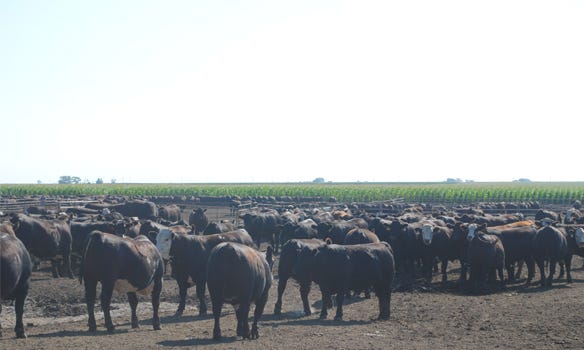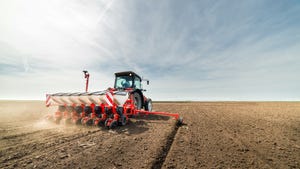
Any producer who has weaned calves knows all about the risk factors. Calves that are stressed during weaning are more likely to succumb to bovine respiratory disease. Brian Vander Ley, a veterinarian at Great Plains Veterinary Education Center in Lincoln, told producers at a recent Beef Feedlot Roundtable meeting in West Point that producers know the risk factors, but those factors haven't been quantified very often. "Everyone in the feeding business has some respiratory disease in their cattle," Vander Ley said. "The impact of the pathogen depends on how strong the host is when presented with the disease. If you have a strong pathogen and a strong host, then at least it's an even fight," he explained. "But if you have a strong pathogen and a weak host, you are more likely to see a disease outbreak."
According to Vander Ley, cattle are no different from people. "When cattle are commingled during weaning time and there is a reorganization of the social order, pathogens are more likely to take over the upper respiratory system and break down the animal's defenses," he said. "BRD is often an accumulation of many problems over time and the removal of natural defense mechanisms, brick by brick."

KEEPING THEM HEALTHY: Most BRD issues with calves come when the animals are stressed, like during weaning time. Controlling the factors that play a role in BRD can be challenging for producers.

• Dust. While dust has always been considered a risk for BRD, direct evidence of the role of dust is rare, Vander Ley said. "Dust can cause irritation, and anything that causes irritation will break down defenses," he said. "This causes coughing and may predispose the animals to disease."
• Temperature. Temperature's impact is more well-known. It seems that colder low temperatures reduce mucus and debris clearance from lungs, requiring a large metabolic effort to maintain body temperature. So it causes a diversion of resources and is more likely to increase the incidence of BRD. A greater range in temperature may also be mildly correlated to increased incidence, Vander Ley said. Higher temperatures can increase the respiratory rate and predispose the animal to some viral pathogens, he added.
• Transport. Most studies around transport related to BRD risk are centered on the distance and length of the transport, he said. "Transporting in the spring seems less impactful than other seasons," Vander Ley said. "It also seems that wet and muddy conditions are as bad or worse than drought conditions when it comes to BRD," he explained. "Any condition that requires increased protein and energy may divert resources from the host's defenses," he said.
Environmental impacts are usually related directly to those host defenses, he said. Alone, the individual impacts are normally quite minor, but can become catastrophic when accumulated with several other risk factors. "Control is most effective if we can interrupt the usual sequence of events leading to BRD, rather than focusing solely on pathogens and treatments," Vander Ley said. "Practices like weaning, handling and commingling should be managed to reduce stress on the cattle," he explained.
"Sound vaccination programs, preferably implemented before cattle are weaned and shipped, help mitigate viral challenges that interact with poor environmental conditions and result in more severe disease," Vander Ley added. "In cases where cattle are exposed to conditions that can't be managed by the receiving feedlot, appropriate antibiotic therapy may be necessary to control losses."
You can learn more by contacting Vander Ley at [email protected].
About the Author(s)
You May Also Like






